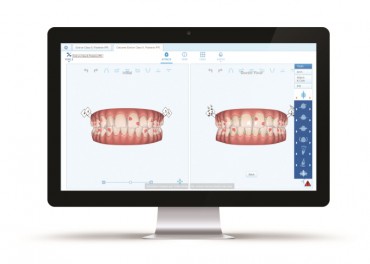TEL-AVIV, Israel, Jul. 26 (Korea Bizwire) — RedHill Biopharma Ltd. (NASDAQ:RDHL) (TASE:RDHL) (“RedHill” or the “Company”), a biopharmaceutical company primarily focused on development and commercialization of late clinical-stage, proprietary, orally-administered, small molecule drugs for inflammatory and gastrointestinal diseases and cancer, today reported its financial results for the quarter ended June 30, 2016.
The Company will host a conference call on Tuesday, July 26, 2016, at 9:00 am EDT to review the financial results and business highlights, dial-in details are included below.
Financial highlights for the quarter ended June 30, 20161:
Research and Development Expenses for the second quarter of 2016 were $6.0 million, an increase of $0.9 million, compared to $5.1 million in the second quarter of 2015. Research and Development Expenses for the six months ended June 30, 2016 were $10.7 million, an increase of $1.8 million, compared to $8.9 million in the comparable period of 2015. The increase in 2016 resulted primarily from clinical trial costs related to the ongoing Phase III MAP US study with RHB-104 (Crohn’s disease) and from preparations for several Phase I/II studies with YELIVA™ for multiple oncology, inflammatory and gastrointestinal indications.
General, Administrative and Business Development Expenses in the second quarter of 2016 were $1.2 million, an increase of $0.4 million, compared to $0.8 million in the second quarter of 2015. General, Administrative and Business Development Expenses for the six months ended June 30, 2016 were $2.4 million, an increase of $0.7 million, compared to $1.7 million in the comparable period of 2015. The increase was mainly due to enhanced business development activities.
Operating Loss in the second quarter of 2016 was $7.2 million, an increase of $1.3 million, compared to $5.9 million in the second quarter of 2015. Operating Loss for the six months ended June 30, 2016 were $13.1 million, an increase of $2.5 million, compared to $10.6 million in the comparable period of 2015. The increase was mainly due to increases in Research and Development Expenses, as detailed above.
Net Cash Used in Operating Activities in the second quarter of 2016 was $5.7 million, an increase of $1.0 million, compared to $4.7 million in the second quarter of 2015. Net Cash Used in Operating Activities for the six months ended June 30, 2016 was $10.7 million, an increase of $2.6 million, compared to $8.1 million in the comparable period of 2015. The increase mainly reflects the increase in Operating Loss, as detailed above.
Net Cash Used in Investment Activities in the second quarter of 2016 was $2.9 million, compared to Net Cashed Provided by Investment Activities of $3.5 million in the second quarter of 2015. Net Cash Used in Investment Activities for the six months ended June 30, 2016 was $7.5 million, an increase of $3.9 million, compared to $3.6 million in the comparable period of 2015. The increase in Net Cash Used in Investment Activities was mainly due to an increase in bank deposits and marketable securities in 2016.
Net Cash Provided by Financing Activities in the second quarter of 2016 was $0.1 million, compared to an immaterial amount in the second quarter of 2015. Net Cash Provided by Financing Activities for the six months ended June 30, 2016 was $0.1 million, compared to $13.2 million in the comparable period of 2015, which resulted mainly from the Company’s public offering in February 2015.
Cash Balance2 as of June 30, 2016 was $47.7 million, a decrease of $10.4 million, compared to $58.4 million as of December 31, 2015. The decrease was a result of the ongoing operations, mainly related to research and development activities.
“We have achieved several significant clinical and operational milestones this quarter, while continuing to maintain our financial discipline,” said Mr. Micha Ben Chorin, RedHill’s CFO. “With a strong cash position of $47.7 million at the end of the second quarter we are well-positioned to advance our strategic and operational plans, including the establishment of commercial operations in the U.S. During the second quarter, we continued to actively advance our three Phase III-stage gastrointestinal programs. We are working towards several anticipated milestones, including interim DSMB analysis of the RHB-104 Phase III study for Crohn’s disease, final results from the Phase IIa study with RHB-104 for multiple sclerosis, initiation of a confirmatory Phase III study with RHB-105 for the treatment of H. pylori infection and top-line results from the BEKINDA™ Phase III study for gastroenteritis. In the coming weeks, we expect to provide a mid-year business update that will highlight the status and timelines for RedHill’s main operations.”
Conference Call and Webcast Information:
The Company will host a conference call on Tuesday, July 26, 2016, at 9:00 am EDT to review the financial results and business highlights.
To participate in the conference call, please dial the following numbers 5-10 minutes prior to the start of the call: United States: +1-877-280-1254; International: +1-646-254-3388; and Israel: +972-3-763-0147. The access code for the call is 539724.
The conference call will be broadcasted live and available for replay on the Company’s website, http://ir.redhillbio.com/events.cfm, for 30 days. Please access the Company’s website at least 15 minutes ahead of the conference to register, download, and install any necessary audio software.
Recent operational highlights:
- On April 11, 2016, RedHill announced that it had initiated a randomized, double-blind, placebo-controlled, 2-arm parallel group Phase II clinical study in the U.S. evaluating the safety and efficacy of BEKINDA™ 12 mg in patients with diarrhea-predominant irritable bowel syndrome (IBS-D). The study is expected to be conducted in 12 clinical sites in the U.S. and to enroll 120 patients who will be randomized 60:40 to receive either BEKINDA™ 12 mg or a placebo, once daily, for a period of eight weeks. The primary endpoint for the study is the proportion of patients in each treatment group with response in stool consistency as compared to baseline, per U.S. Food and Drug Administration (FDA) guidance definition. Secondary endpoints include the proportion of patients in each treatment group who are pain responders and the proportion of patients in each treatment group who are responders to the combined endpoints of stool consistency and pain, per FDA guidance definition. RedHill further announced, on June 20, 2016, that the first patients in the Phase II study had been dosed.
- On April 18, 2016, RedHill announced that it had concluded a positive Type B Meeting with the FDA regarding the path to marketing approval of RHB-105 and the planned confirmatory Phase III study for the treatment of H. pylori infection. The FDA confirmed, subject to final minutes of the meeting, the planned two-arm, randomized, double-blind, active comparator design of the confirmatory Phase III study. Based on FDA feedback, and subject to successful completion, the planned confirmatory Phase III study, along with the successfully completed first Phase III study and data from a supportive PK program, are expected to support a U.S. New Drug Application (NDA) for RHB-105.
The FDA Type B meeting announcement followed the successful final results from the first Phase III clinical study with RHB-105 (the ERADICATE Hp study) reported in March 2016, confirming that the ERADICATE Hp study successfully met its primary endpoint of superiority over historical standard-of-care (SoC) eradication rate levels of 70%, with high statistical significance (p<0.001). The results demonstrated 89.4% efficacy in eradicating H. pylori infection with RHB-105. RHB-105 has been granted Qualifying Infectious Disease Product (QIDP) designation by the FDA, providing a Fast-Track development pathway, as well as Priority Review status, potentially leading to a shorter review time by the FDA of a NDA, if filed. If approved, RHB-105 will have a total of 8 years of market exclusivity.
- On May 4, 2016, RedHill announced that the U.S. National Cancer Institute (NCI) has awarded the Medical University of South Carolina (MUSC) a $1.8 million grant to support a broad range of studies on the feasibility of targeting sphingolipid metabolism for the treatment of a variety of solid tumor cancers. One component of the studies includes a planned Phase II study with YELIVA™ (ABC294640) for the treatment of advanced hepatocellular carcinoma (HCC), the most common primary malignant cancer of the liver3. The Phase II study, planned to be initiated in the third quarter of 2016, will be conducted at MUSC and additional clinical sites and is intended to evaluate the efficacy and safety of YELIVA™ as a second-line monotherapy in patients with advanced HCC. The NCI grant covers a five-year period. The Phase II HCC study will be further supported by additional funding from RedHill, which acquired the exclusive worldwide rights to YELIVA™ from Apogee Biotechnology Corp. (Apogee).
- On June 21, 2016, RedHill announced positive final results from the Phase I study with YELIVA™ in advanced solid tumors. The results confirmed that the study successfully met both its primary and secondary endpoints, demonstrating that YELIVA™ can be safely administered to cancer patients at doses that provide circulating drug levels that are predicted to have therapeutic activity, based on levels required in preclinical models. The study included the first-ever longitudinal analyses of plasma S1P levels as a potential pharmacodynamic biomarker for activity of a sphingolipid-targeted drug. Administration of YELIVA™ resulted in a rapid and pronounced decrease in S1P levels over the first 12 hours, with return to baseline at 24 hours, which is consistent with clearance of the drug. YELIVA™ was well tolerated over a prolonged period at doses inducing the expected pharmacodynamic effects.
- On June 22, 2016, RedHill announced the publication of an article4 demonstrating that the triple combination of the RHB-104 active components provides excellent synergistic activity in the inhibition of mycobacterial growth, potentially leading to a new and effective treatment for Crohn’s disease associated with Mycobacterium avium subspecies paratuberculosis (MAP) infection. The article, entitled “RHB-104 triple antibiotics combination in culture is bactericidal and should be effective for treatment of Crohn’s disease associated with Mycobacterium paratuberculosis” describes a pre-clinical study intended to determine the efficacy of the RHB-104 active components (the antibiotics clarithromycin, clofazimine and rifabutin) against MAP strains isolated from the blood, tissue and milk of Crohn’s disease patients. The results of the study demonstrated that the RHB-104 active components, in their individual concentrations or in dual combinations, were not as effective against all microorganisms, compared to the triple combination at minimum inhibitory concentrations level.
- On July 5, 2016, RedHill and its co-development partner, IntelGenx Corp. (IntelGenx), announced the signing of an exclusive license agreement with Grupo JUSTE S.A.Q.F (Grupo JUSTE), for the commercialization of RIZAPORT™ oral thin-film for acute migraines. Under the terms of the agreement, RedHill granted Grupo JUSTE the exclusive rights to register and commercialize RIZAPORT™ in Spain and a right of first refusal for a predefined term for the territories of Belize, Carribean, Chile, Colombia, Costa Rica, Dominican Republic, El Salvador, Guatemala, Honduras, Mexico, Nicaragua, Panama, the Middle East and Morocco. RedHill and IntelGenx are entitled to receive an upfront payment and additional milestone payments upon the achievement of certain predefined regulatory and commercial targets, as well as tiered royalties. Financial terms of the agreement were not disclosed. The initial term of the agreement is for ten years from the date of the first commercial sale and shall automatically renew for an additional two-year term. Commercial launch in Spain is expected to take place in the second half of 2017.
- On July 13, 2016, RedHill announced the signing of a research collaboration agreement with the U.S. National Institute of Allergy and Infectious Diseases (NIAID), part of the National Institutes of Health (NIH), intended to evaluate RedHill’s proprietary experimental therapy for the treatment of Ebola virus disease. The new research collaboration follows encouraging results from preliminary non-clinical studies conducted in conjunction with the NIAID using RedHill’s proprietary experimental therapy. If successful, this study is intended to provide supportive data for discussions with the FDA for potential use of the Animal Rule pathway for approval. Ebola virus disease is a severe and often fatal illness, which can cause severe hemorrhagic fever in humans and has a mortality rate ranging from 25% to 90%5. There is currently no FDA approved treatment for Ebola virus disease.
- On July 21, 2016, RedHill announced that it had received a Notice of Allowance from the United States Patent and Trademark Office (USPTO) for a new patent covering RHB-105. The patent application, entitled “Pharmaceutical Compositions For The Treatment Of Helicobacter Pylori” expands RedHill’s patent portfolio covering RHB-105 and is expected to be valid until 2034, once granted. The Company is currently prosecuting additional U.S. and international patent applications covering RHB-105.
About RedHill Biopharma Ltd.:
RedHill Biopharma Ltd. (NASDAQ:RDHL) (TASE:RDHL) is a biopharmaceutical company headquartered in Israel, primarily focused on the development and commercialization of late clinical-stage, proprietary, orally-administered, small molecule drugs for the treatment of inflammatory and gastrointestinal diseases and cancer. RedHill’s current pipeline of proprietary products includes: (i) RHB-105 - an oral combination therapy for the treatment of Helicobacter pylori infection with successful results from a first Phase III study; (ii) RHB-104 - an oral combination therapy for the treatment of Crohn’s disease with an ongoing first Phase III study and an ongoing proof-of-concept Phase IIa study for multiple sclerosis; (iii) BEKINDA™ (RHB-102) - a once-daily oral pill formulation of ondansetron with an ongoing Phase III study in the U.S. for acute gastroenteritis and gastritis and an ongoing Phase II study for IBS-D; (iv) RHB-106 - an encapsulated bowel preparation licensed to Salix Pharmaceuticals, Ltd.; (v) YELIVA™ (ABC294640) – a Phase II-stage, orally-administered, first-in-class SK2 selective inhibitor targeting multiple oncology, inflammatory and gastrointestinal indications; (vi) MESUPRON® – a Phase II-stage first-in-class uPA inhibitor, administered by oral capsule, targeting gastrointestinal and other solid tumors; (vii) RP101 - currently subject to an option-to-acquire by RedHill, RP101 is a Phase II-stage first-in-class Hsp27 inhibitor, administered by oral tablet, targeting pancreatic and other gastrointestinal cancers; (viii) RIZAPORT™ (RHB-103) - an oral thin film formulation of rizatriptan for acute migraines, with a U.S. NDA currently under discussion with the FDA and marketing authorization received in Germany in October 2015; and (ix) RHB-101 - a once-daily oral pill formulation of the cardio drug carvedilol.
This press release contains “forward-looking statements” within the meaning of the Private Securities Litigation Reform Act of 1995. Such statements may be preceded by the words “intends,” “may,” “will,” “plans,” “expects,” “anticipates,” “projects,” “predicts,” “estimates,” “aims,” “believes,” “hopes,” “potential” or similar words. Forward-looking statements are based on certain assumptions and are subject to various known and unknown risks and uncertainties, many of which are beyond the Company’s control, and cannot be predicted or quantified and consequently, actual results may differ materially from those expressed or implied by such forward-looking statements. Such risks and uncertainties include, without limitation, risks and uncertainties associated with (i) the initiation, timing, progress and results of the Company’s research, manufacturing, preclinical studies, clinical trials, and other therapeutic candidate development efforts; (ii) the Company’s ability to advance its therapeutic candidates into clinical trials or to successfully complete its preclinical studies or clinical trials; (iii) the extent and number of additional studies that the Company may be required to conduct and the Company’s receipt of regulatory approvals for its therapeutic candidates, and the timing of other regulatory filings, approvals and feedback; (iv) the manufacturing, clinical development, commercialization, and market acceptance of the Company’s therapeutic candidates; (v) the Company’s ability to establish and maintain corporate collaborations; (vi) the Company’s ability to acquire products approved for marketing in the U.S. that achieve commercial success and build its own marketing and commercialization capabilities; (vii) the interpretation of the properties and characteristics of the Company’s therapeutic candidates and of the results obtained with its therapeutic candidates in research, preclinical studies or clinical trials; (viii) the implementation of the Company’s business model, strategic plans for its business and therapeutic candidates; (ix) the scope of protection the Company is able to establish and maintain for intellectual property rights covering its therapeutic candidates and its ability to operate its business without infringing the intellectual property rights of others; (x) parties from whom the Company licenses its intellectual property defaulting in their obligations to the Company; (xi) estimates of the Company’s expenses, future revenues capital requirements and the Company’s needs for additional financing; (xii) competitive companies and technologies within the Company’s industry; and (xiii) the impact of the political and security situation in Israel on the Company’s business. More detailed information about the Company and the risk factors that may affect the realization of forward-looking statements is set forth in the Company’s filings with the Securities and Exchange Commission (SEC), including the Company’s Annual Report on Form 20-F filed with the SEC on February 25, 2016. All forward-looking statements included in this Press Release are made only as of the date of this Press Release. We assume no obligation to update any written or oral forward-looking statement unless required by law.
1 All financial highlights are approximate and are rounded to the nearest hundreds of thousands.
2 Including cash, bank deposits and short-term investments.
3 Gomma AI et al., Hepatocellular carcinoma: epidemiology, risk factors and pathogenesis, World J Gastroenterol, 2008 Jul 21; 14(27): 4300-8.
4 Alcedo KP, Thanigachalam S, Naser SA. RHB-104 triple antibiotics combination in culture is bactericidal and should be effective for treatment of Crohn’s disease associated with Mycobacterium paratuberculosis, Gut Pathogens, 2016, 8:32.
5 World Health Organization (WHO), Fact sheet No° 103, January 2016.
 Company contact:
Company contact:
Adi Frish
Senior VP Business Development & Licensing
RedHill Biopharma
+972-54-6543-112
adi@redhillbio.com
IR contact (U.S.):
Marcy Nanus
Senior Vice President
The Trout Group
+1-646-378-2927
Mnanus@troutgroup.com
Source: RedHill Biopharma via GLOBE NEWSWIRE








